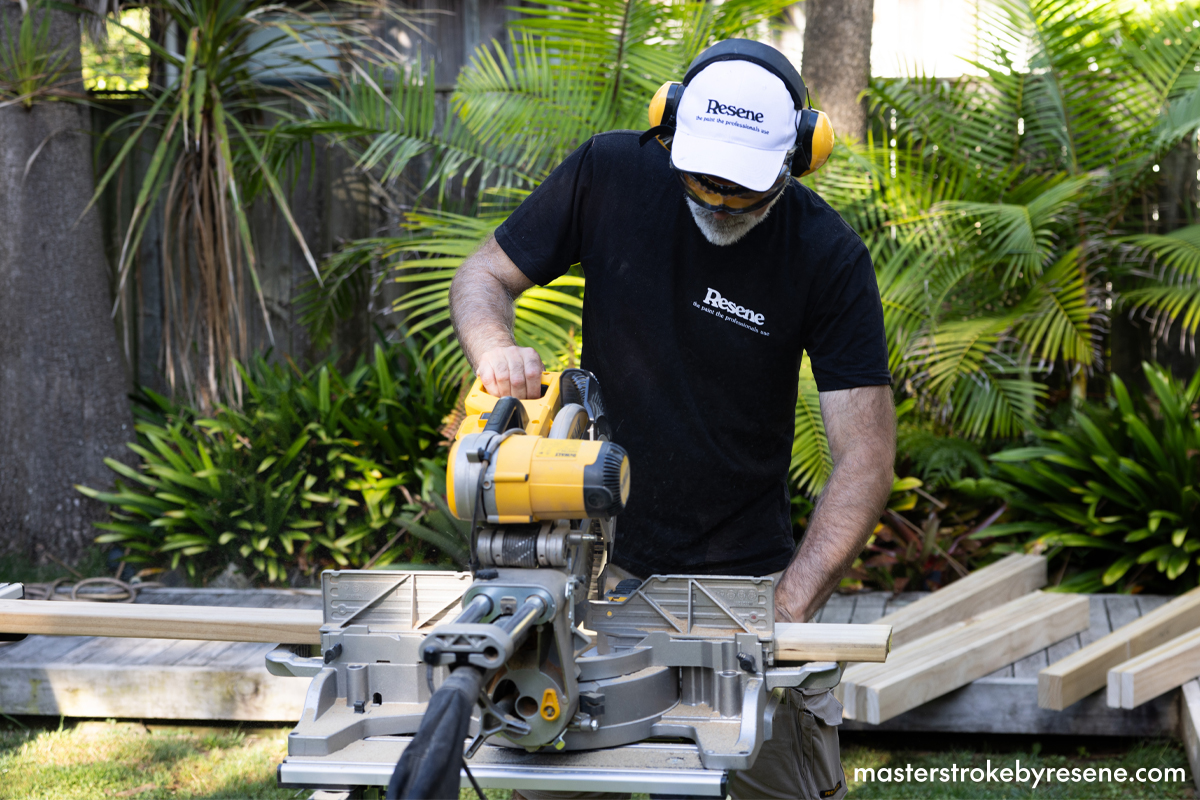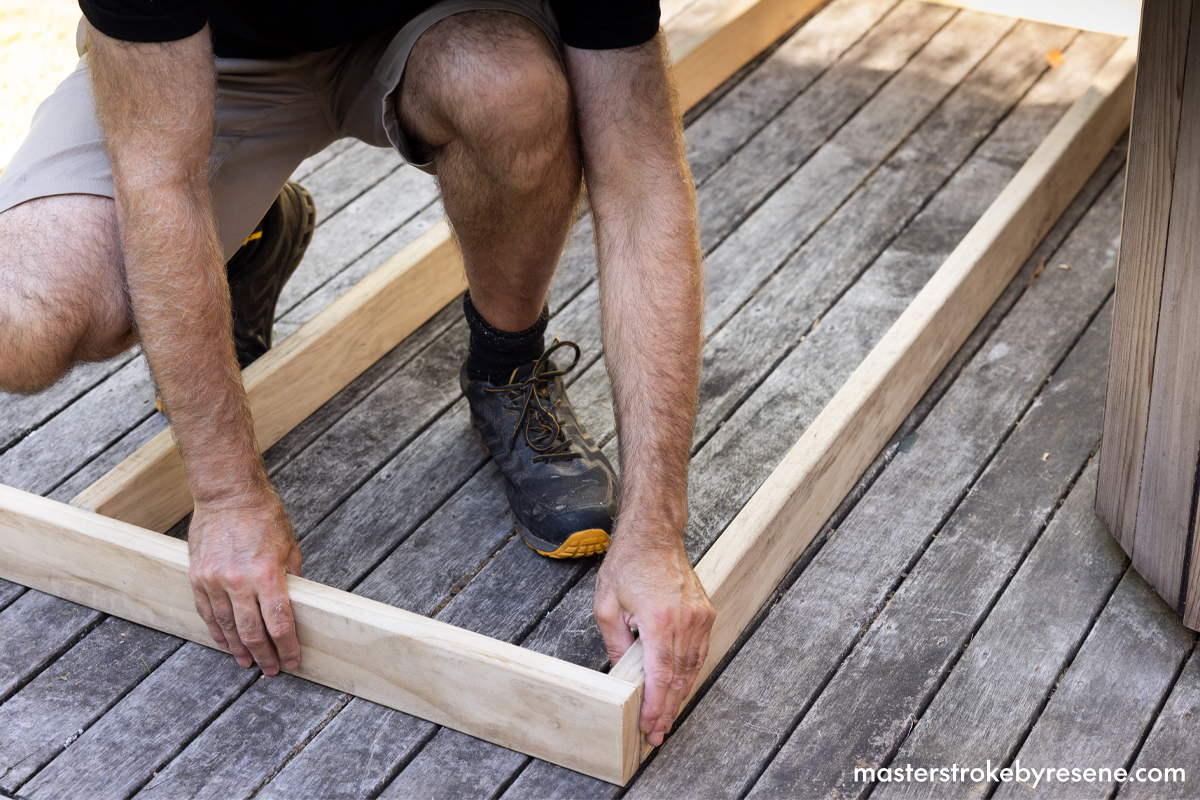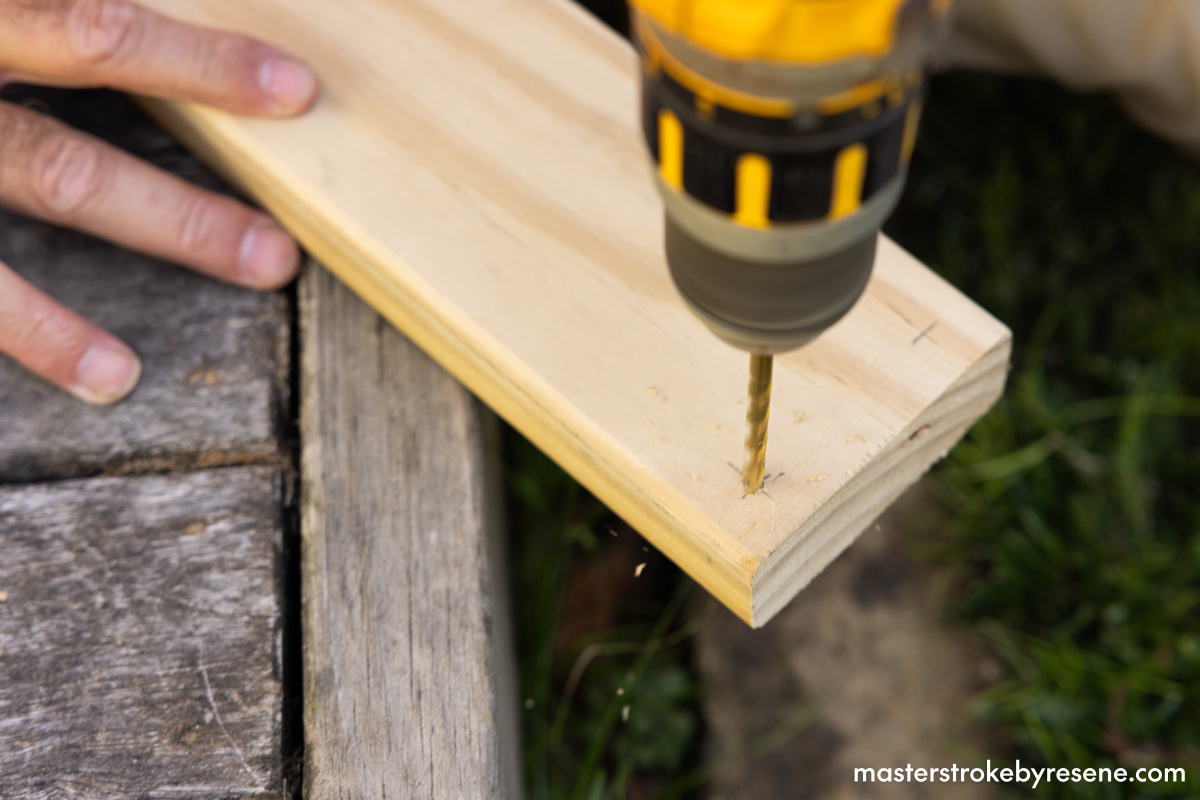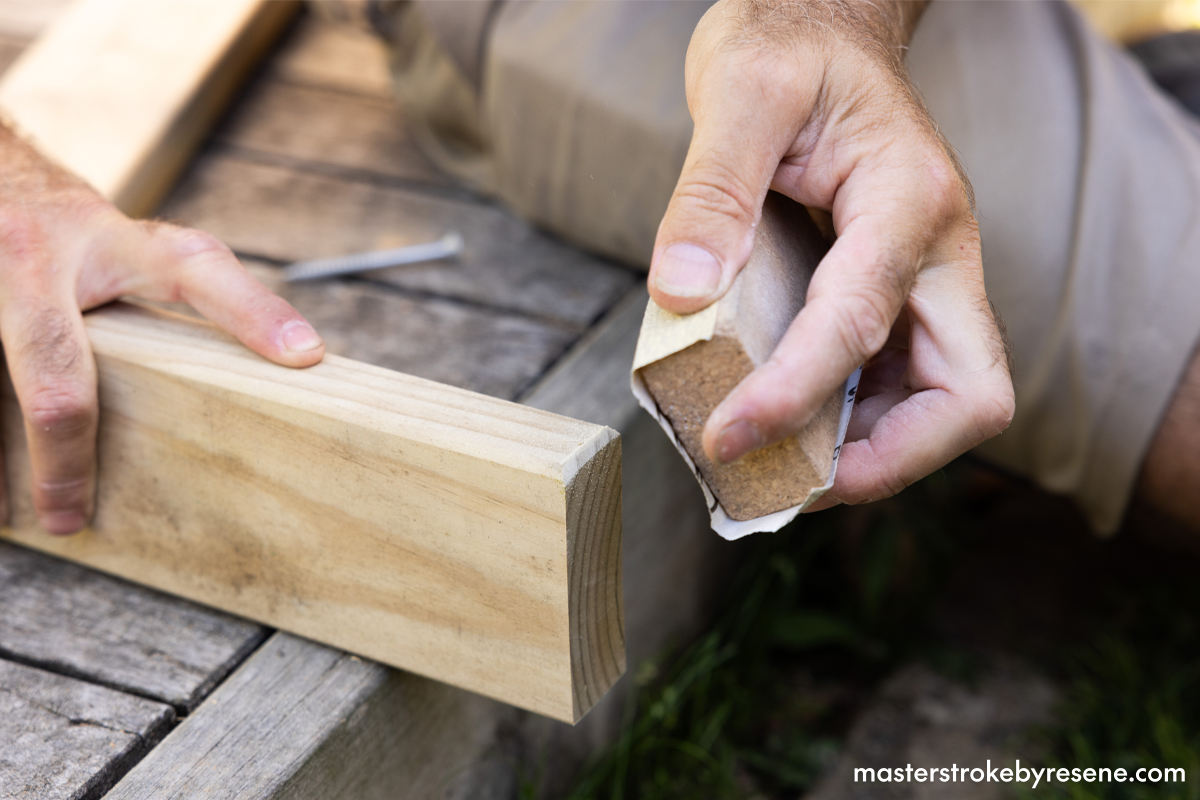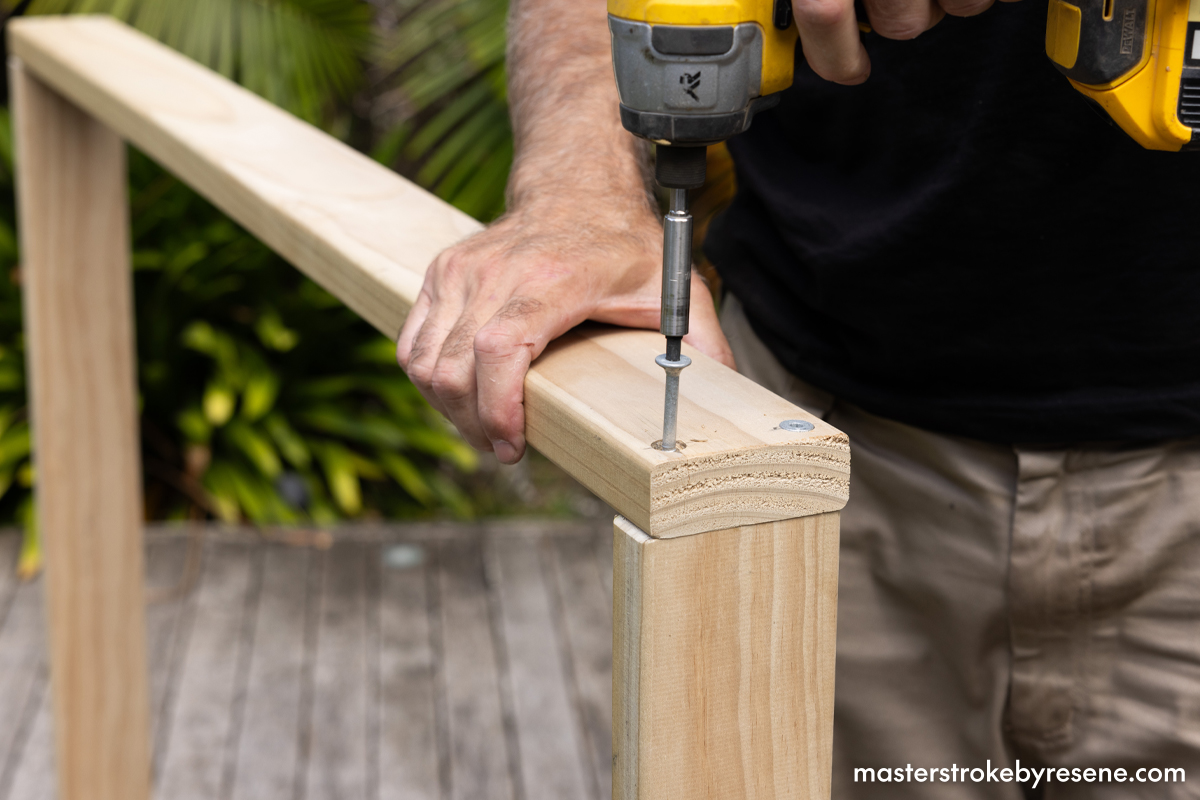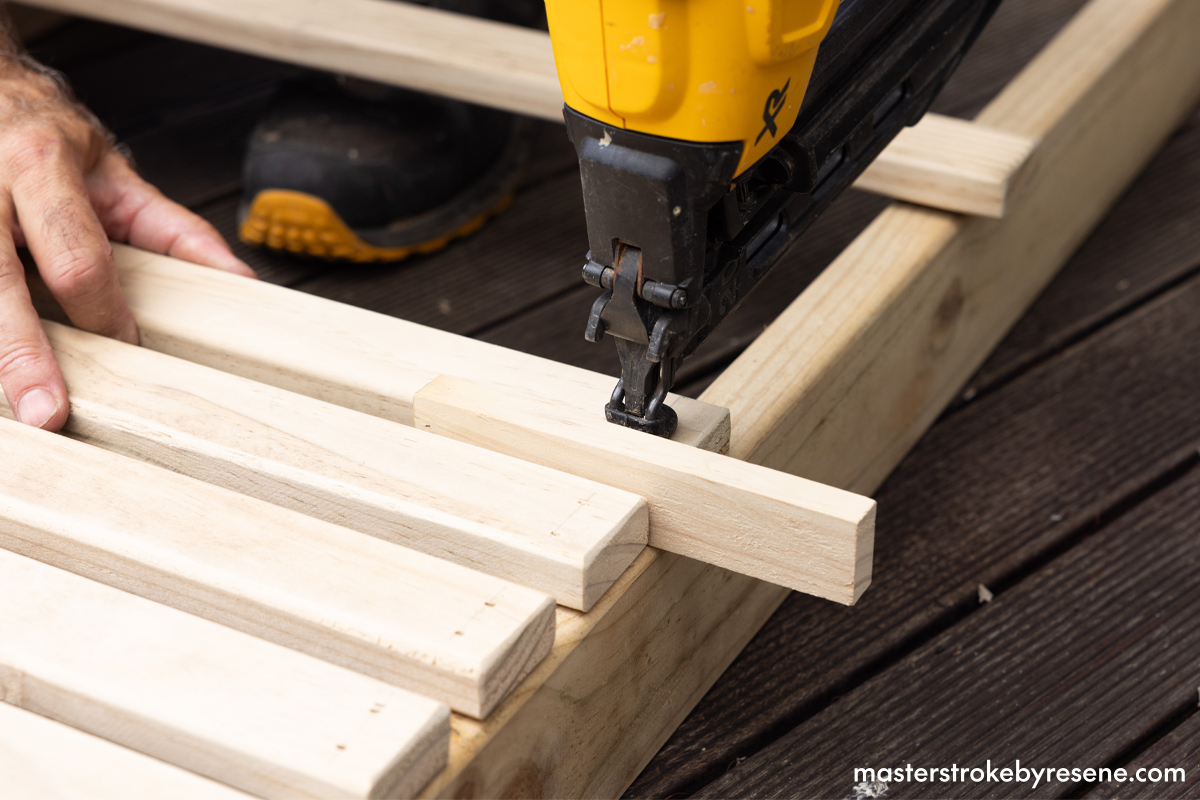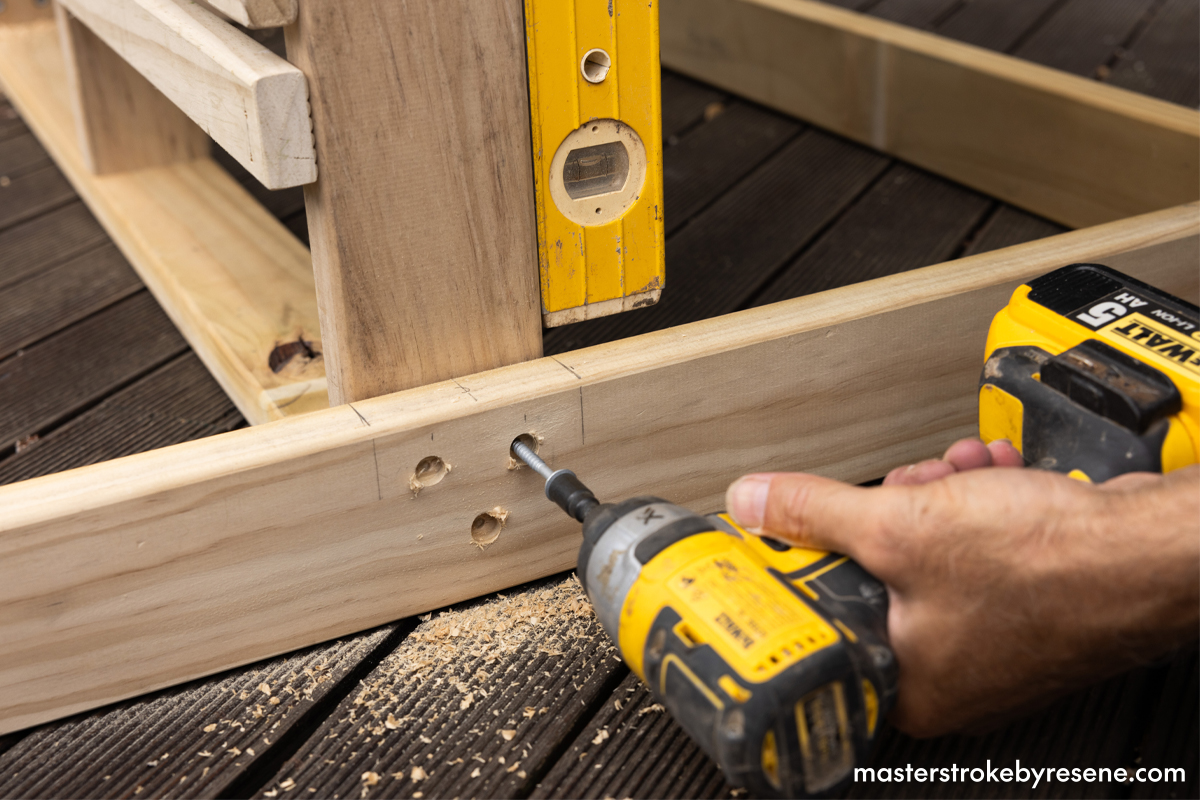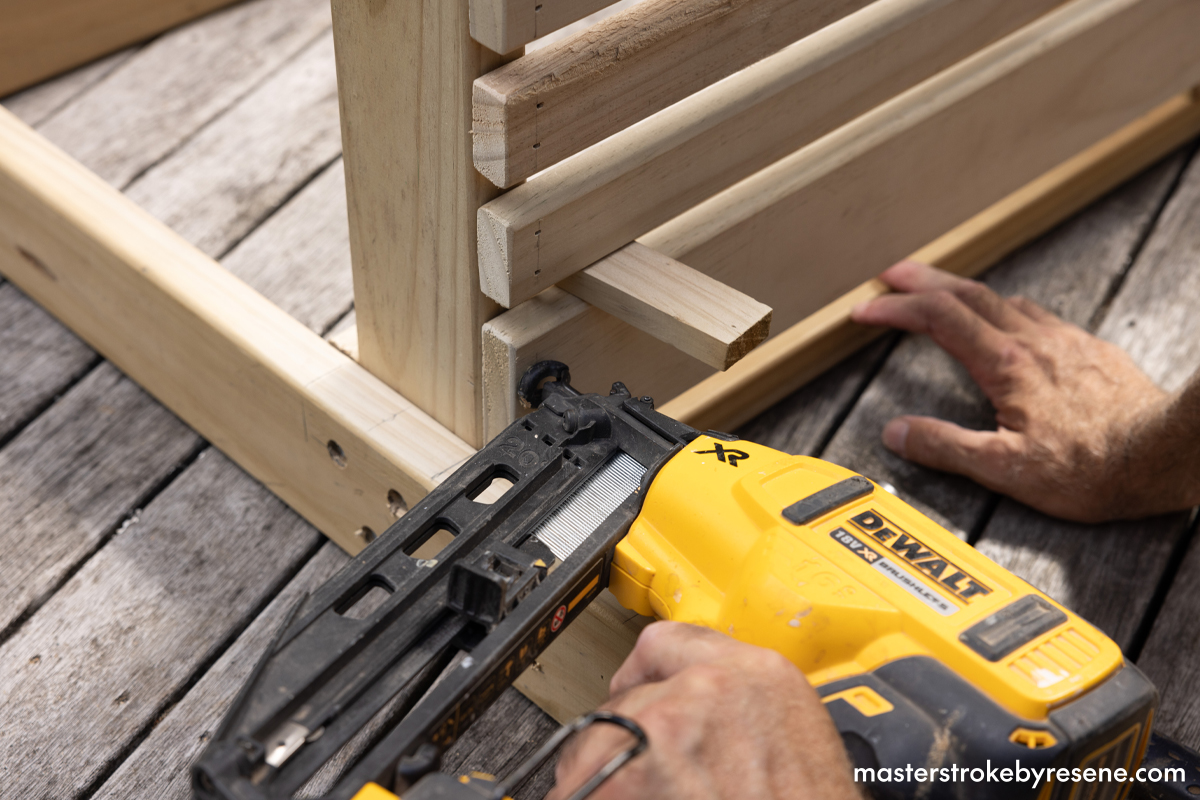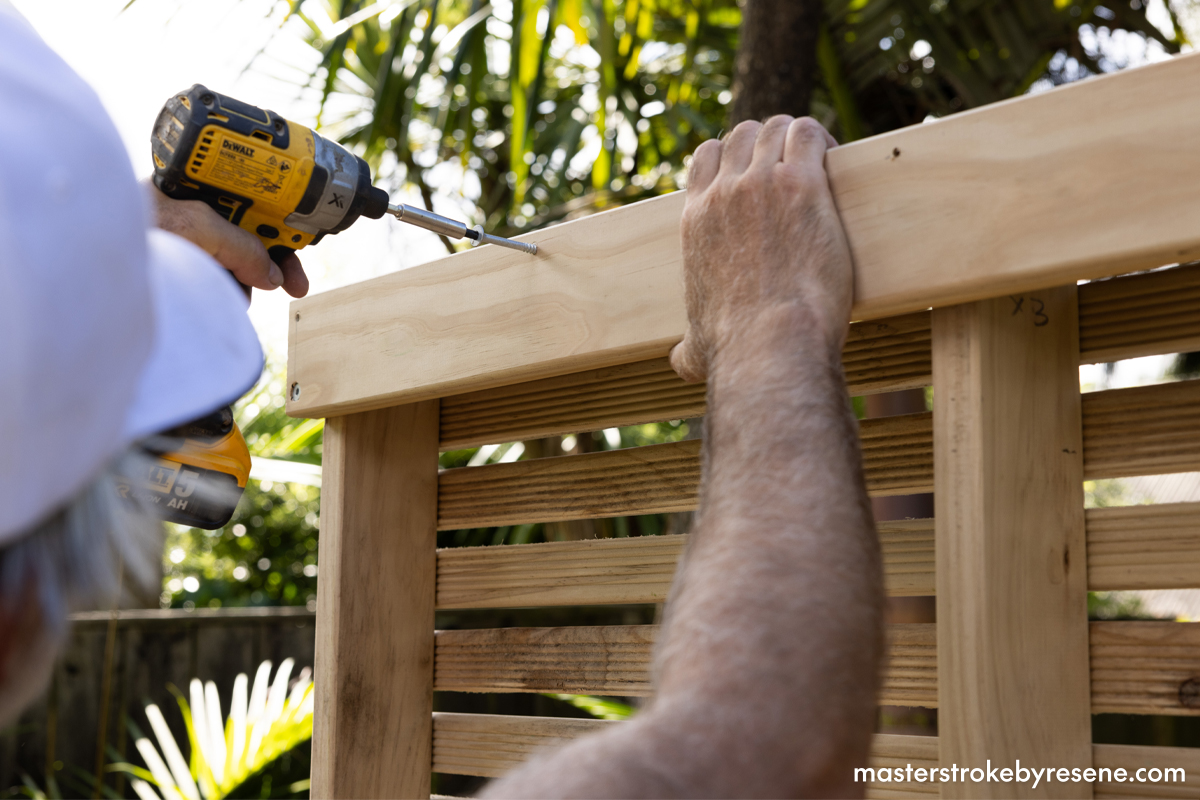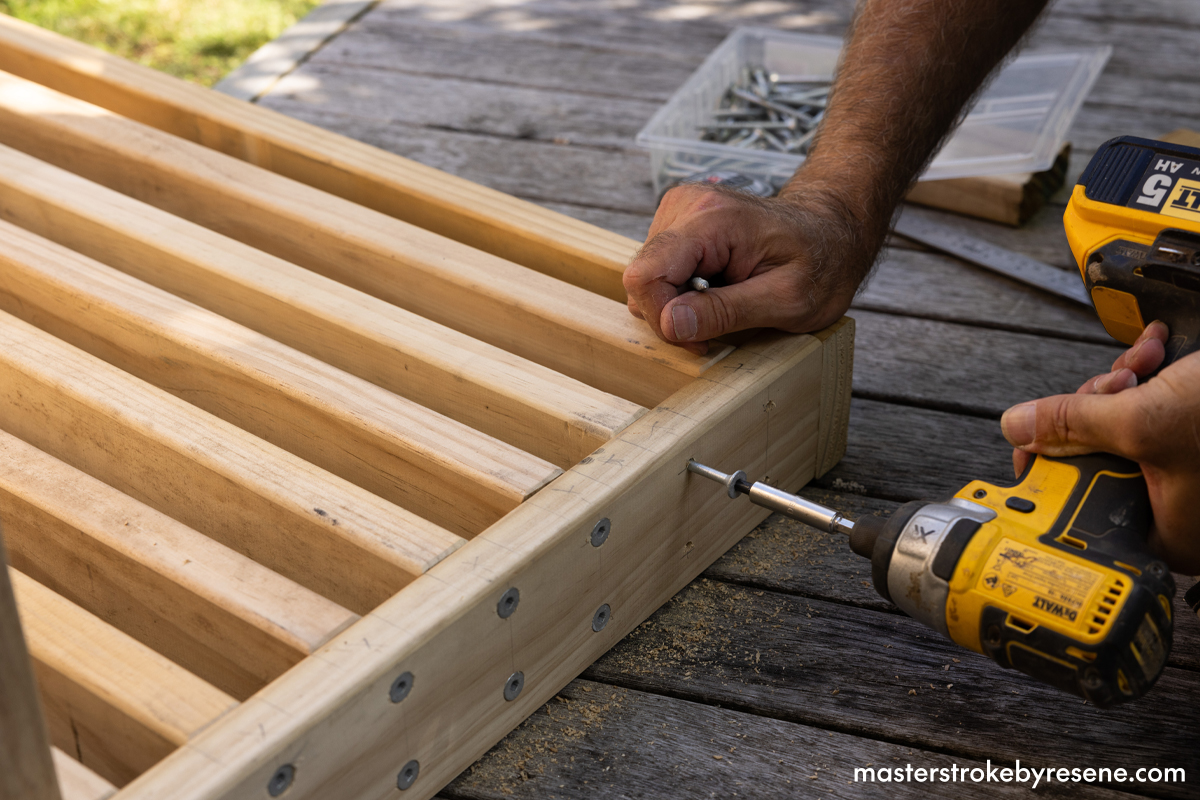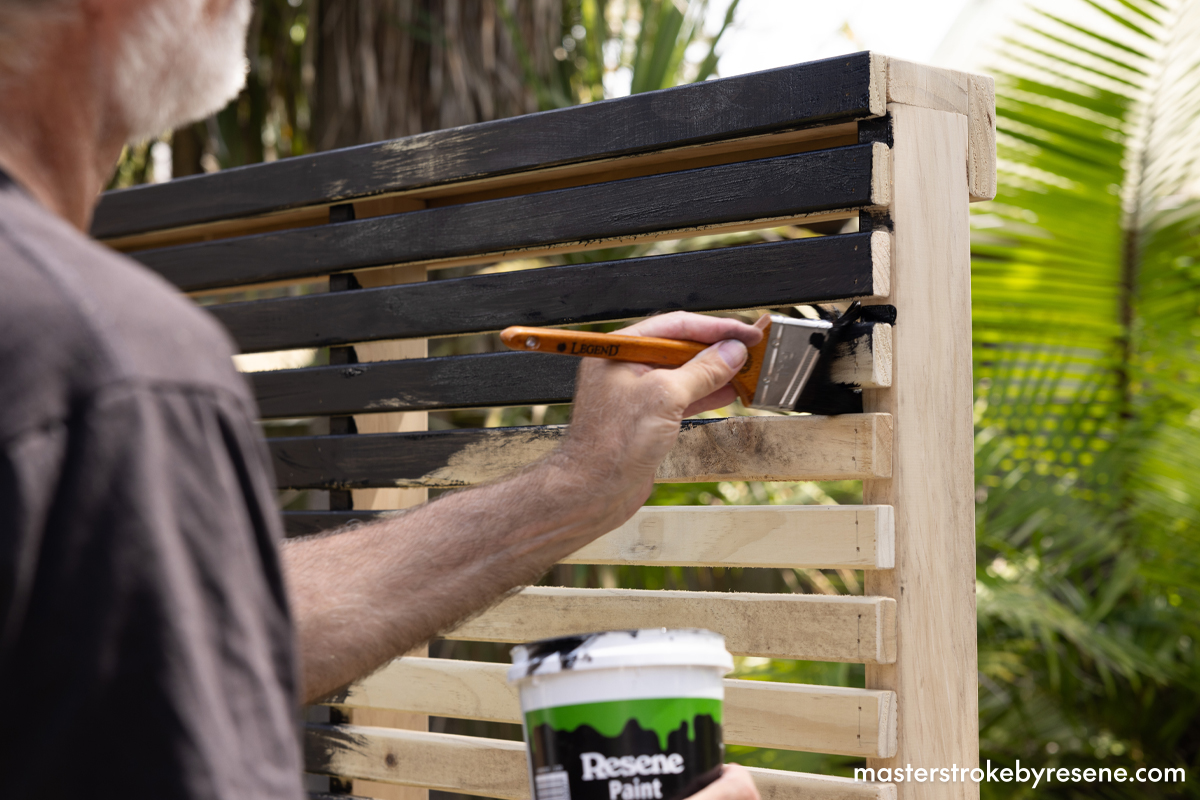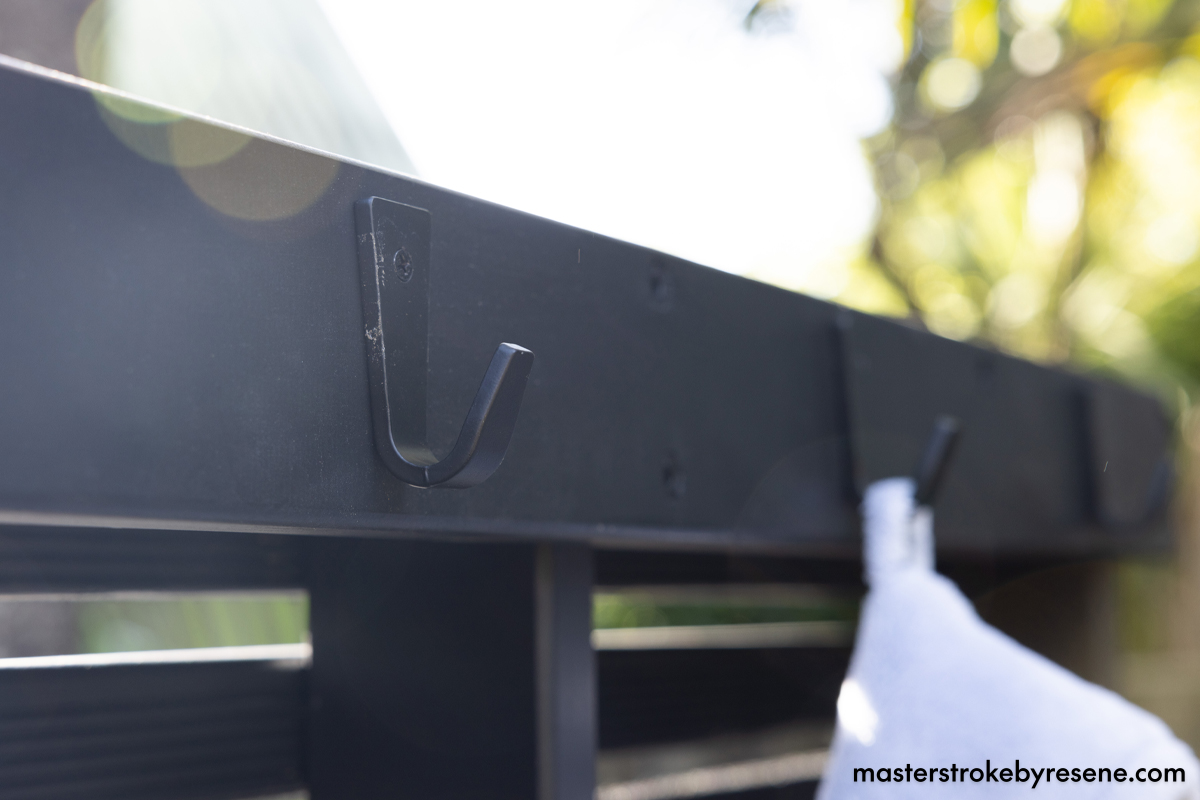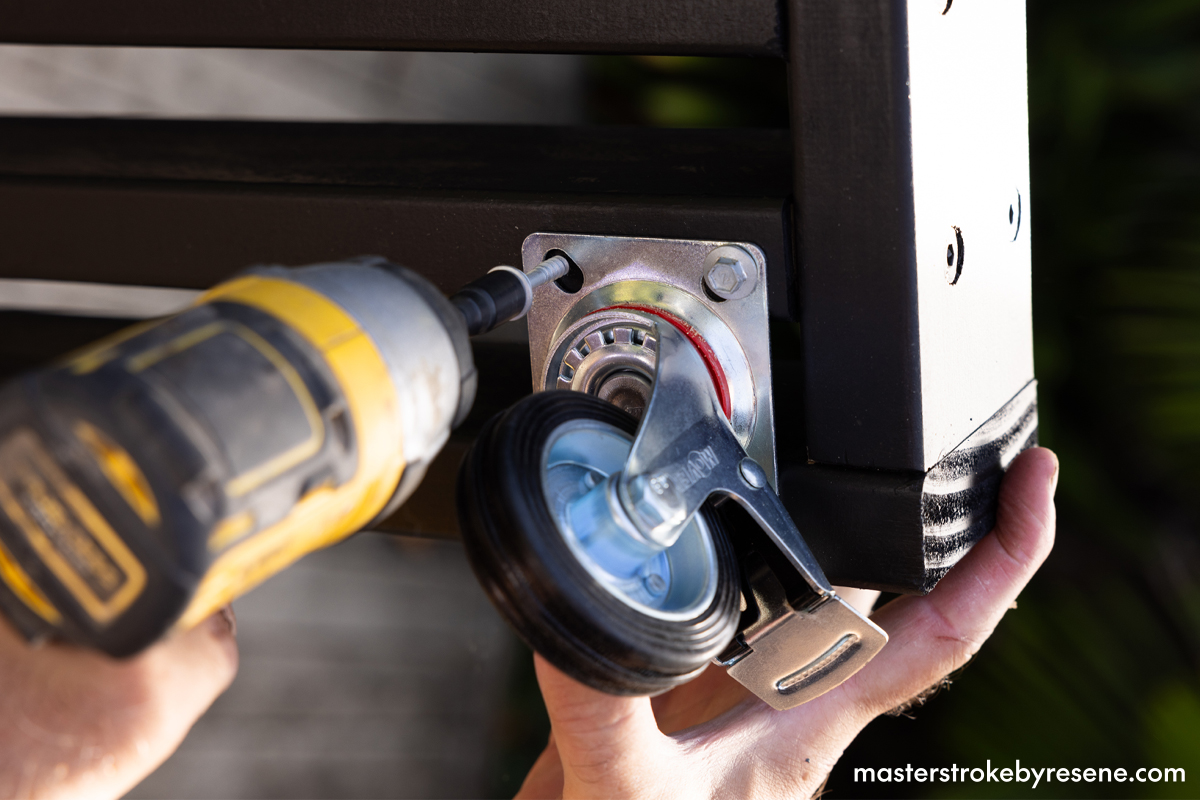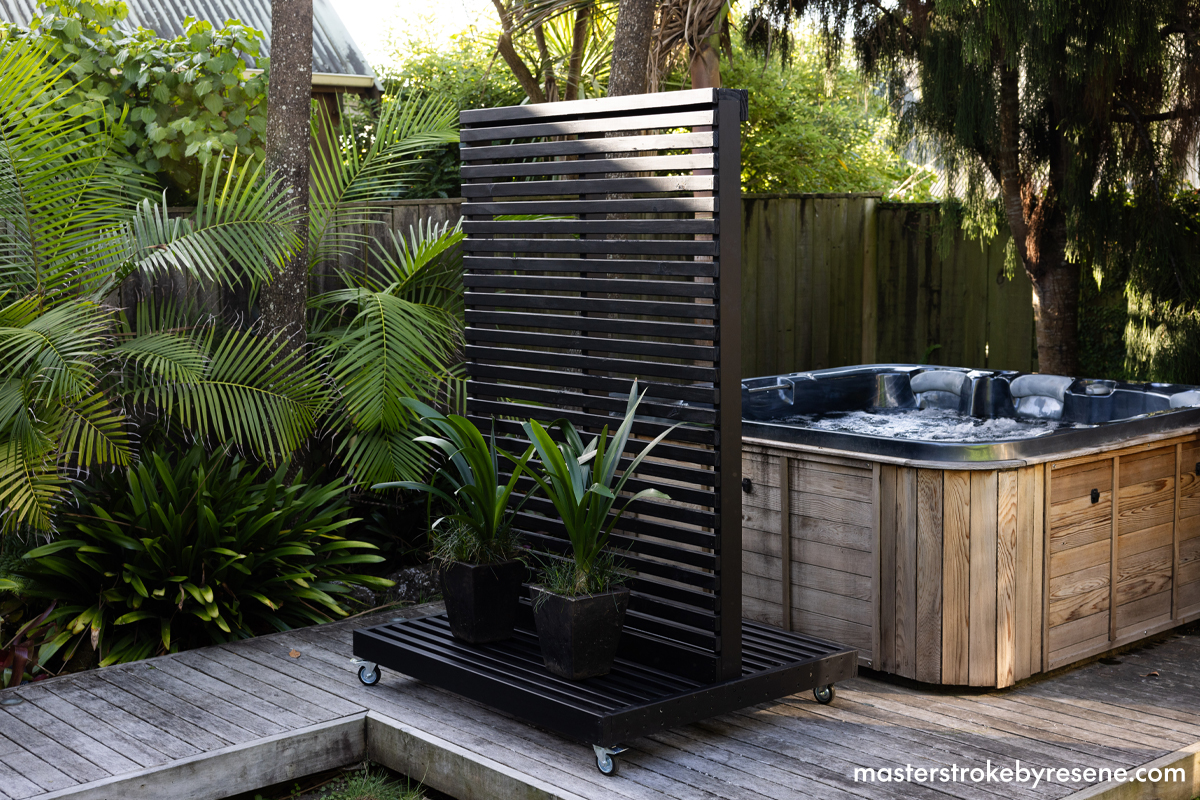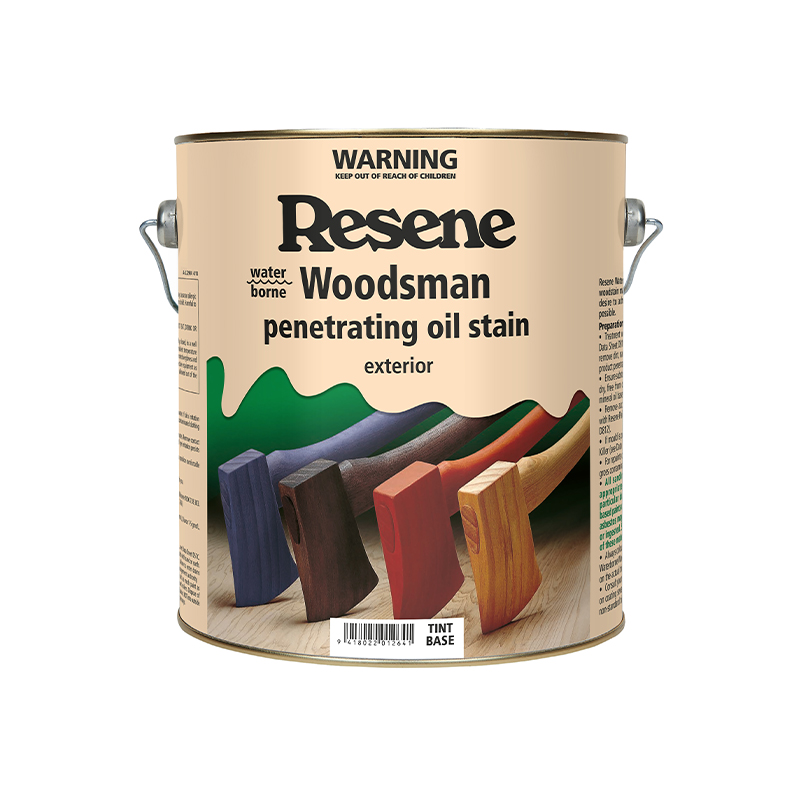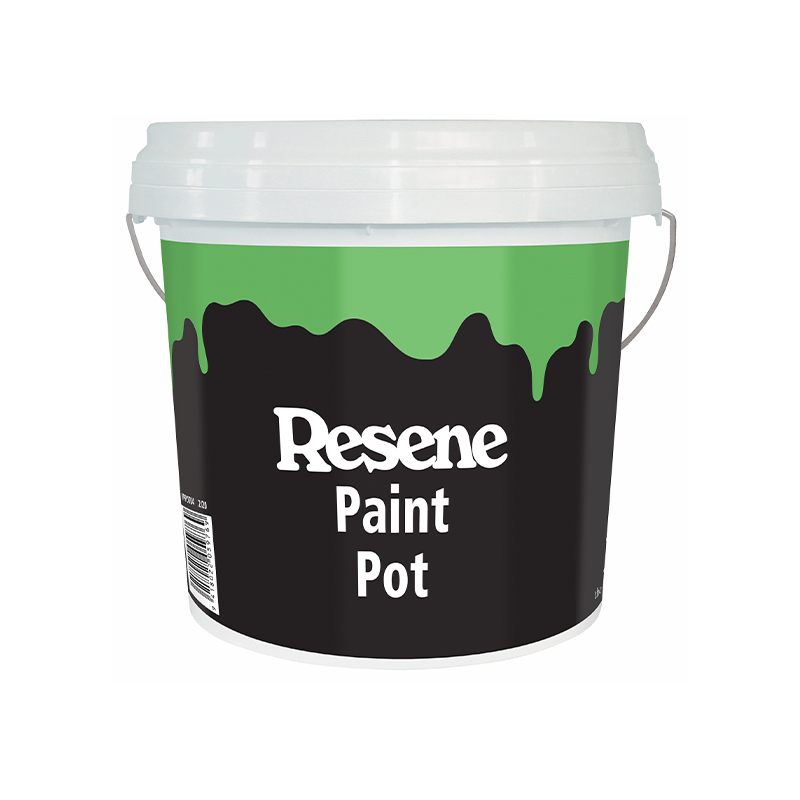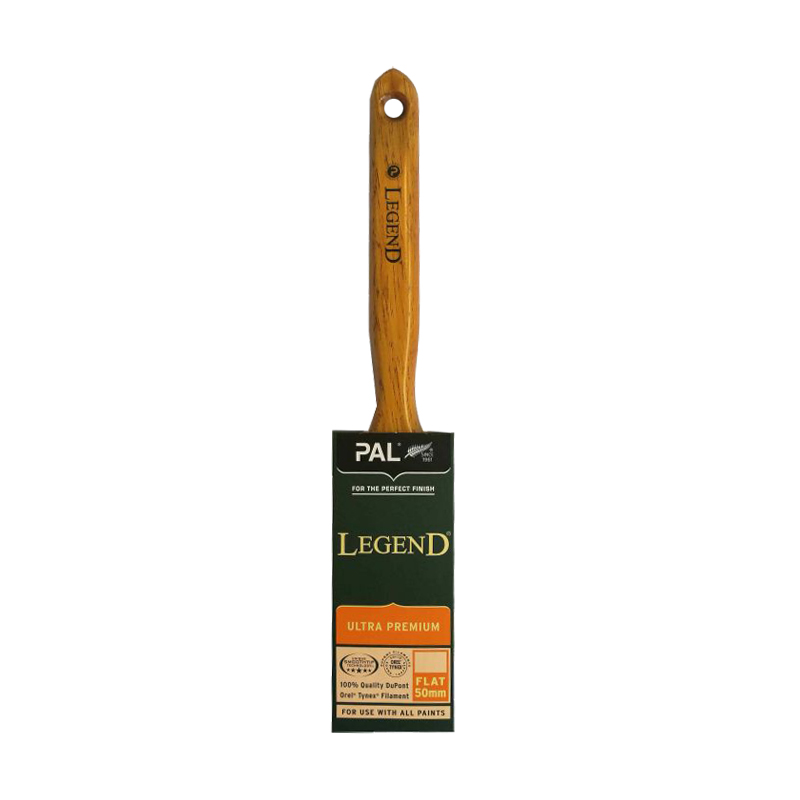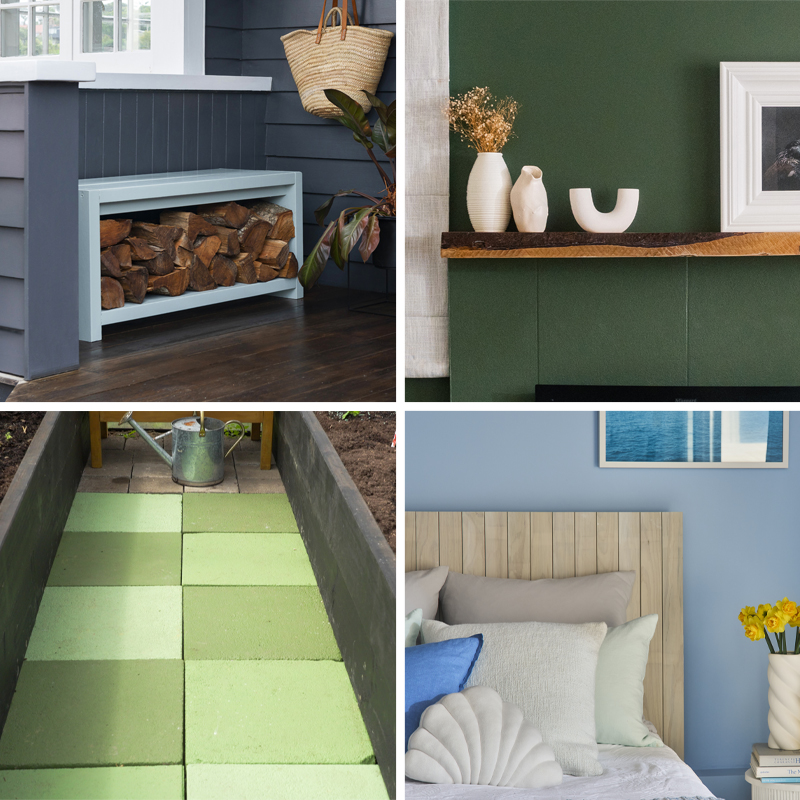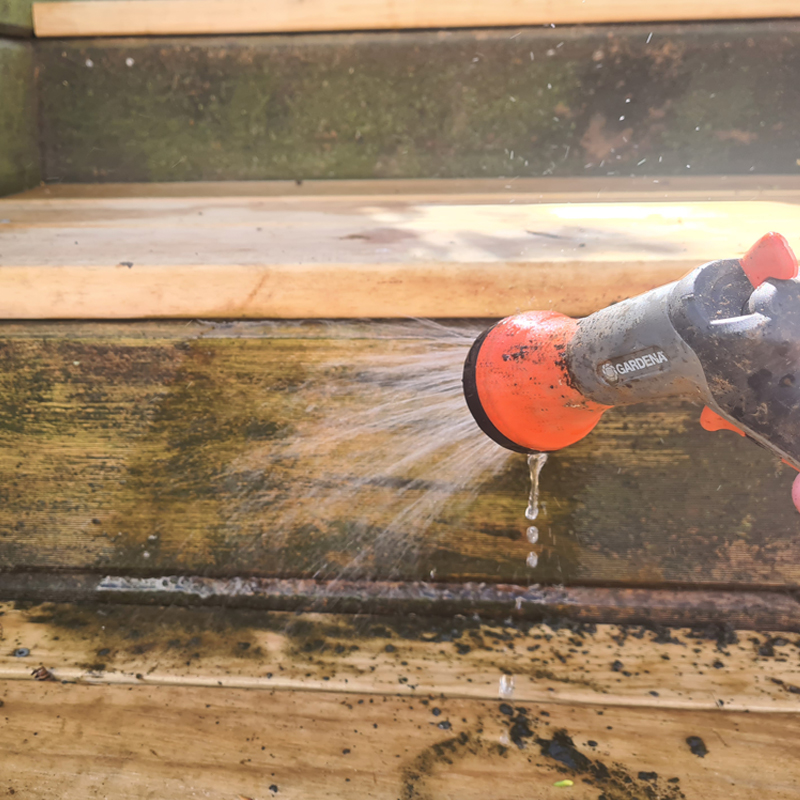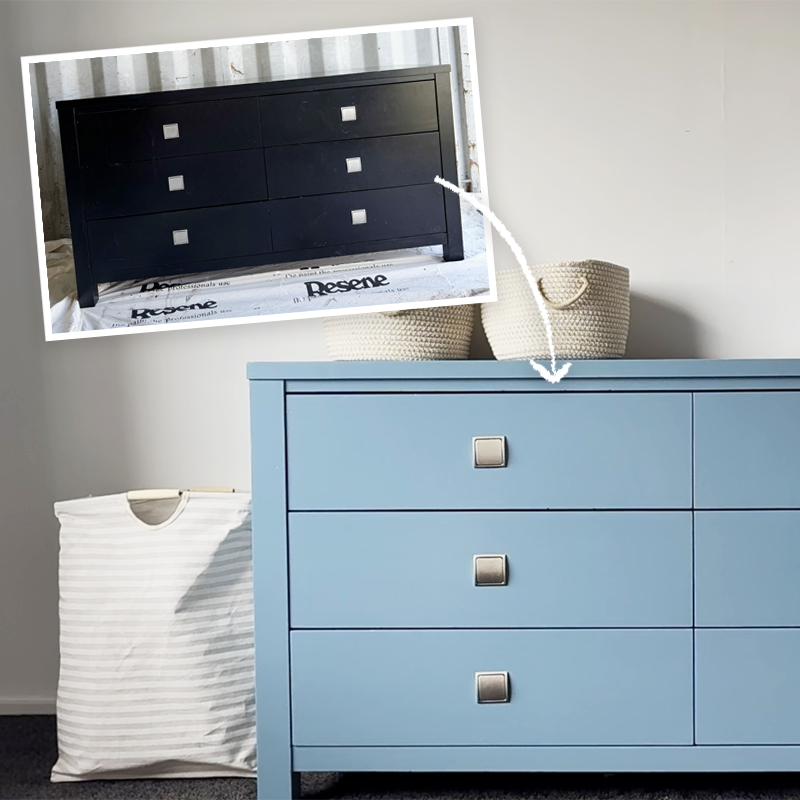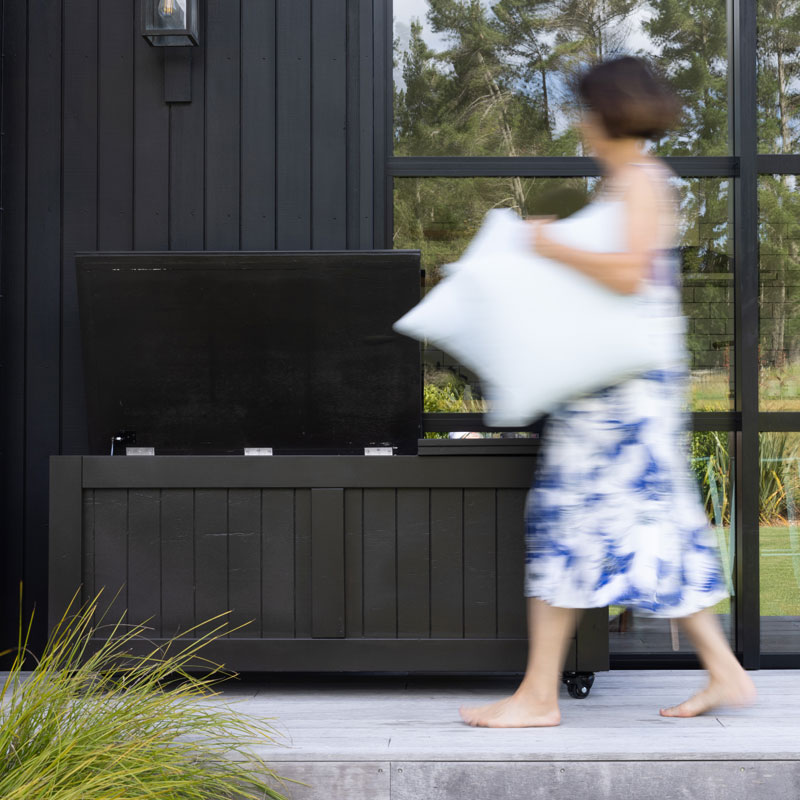Auckland-based commercial photographer and artist Jae Frew is also a keen DIYer, and in this Odd Jobs video, he shows how to whip up a cool privacy screen. He has crafted it from timber and given it a lovely dark finish by staining it with Resene Waterborne Woodsman penetrating oil stain in Resene Pitch Black. The screen is anchored by a sturdy base, which ensures it’s well-balanced and won’t topple over, plus it has castors for seamless movability.
Versatile furniture pieces like this let you customise your outdoor space depending on the season or weather – creating an outdoor room and extension of your home. Think of being curled up with a book in winter or enjoying a wine with friends al fresco on a summer evening. It provides an adjustable shade screen during sunny days, as well as protection from the wind, and thanks to its wheels, can be stored and secured swiftly when required.
Handy hooks along the top offer all kinds of practical uses and take it to a new level of functionality. They’re an ideal place to hang barbecue tools and equipment, or as Jae has done here, holding robes while you take a dip in the pool or spa. The Resene Pitch Black wood stain this screen is finished in also provides an eye-catching contrast to the vibrant green of the plants and garden.
Jae’s interest in DIY came from his father, who was a cabinetmaker. “He let me work alongside him in his workshop, quietly teaching me countless skills and tricks of the trade. I’ve put this knowledge to good use over the past 30-odd years renovating and repairing my Mt Eden house and creating furniture.”
When undertaking projects around the home as well as for his art, Jae loves the reliability and ease of use of Resene products. “There’s a terrific range of products and colours, and the paint covers well and leaves a lovely finish,” he says. “The staff are very knowledgeable and always helpful. I always use Resene – almost every surface of our house is covered in a Resene product of some sort.”
Check out Jae’s step-by-step guide to make your own outdoor privacy screen.

